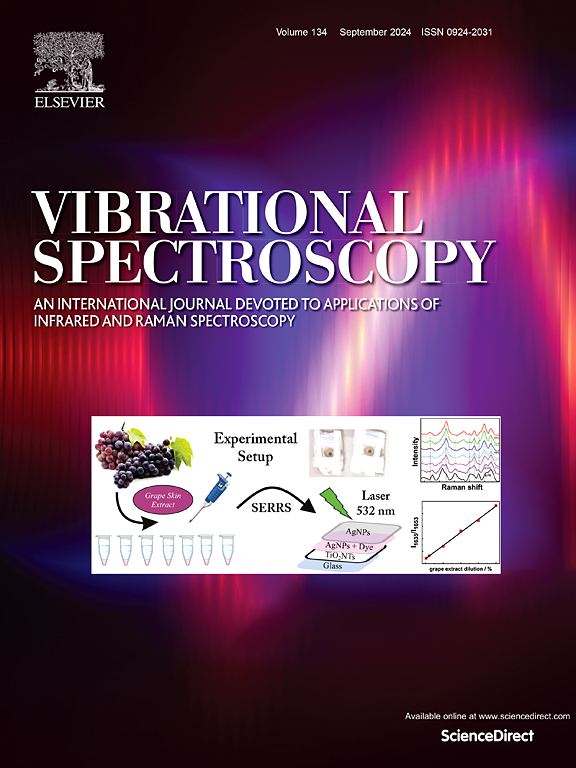基于1DCNN和自注意机制的葡萄酒成分检测
IF 3.1
3区 化学
Q2 CHEMISTRY, ANALYTICAL
引用次数: 0
摘要
本研究提出了一种包含自注意机制的一维卷积自编码器模型- 1dcnn -attention - sae。该模型解决了红外光谱中多组分定量建模预测性能不稳定的问题,特别是在处理特征峰带严重重叠和高维非线性特征难以捕获的复杂非线性问题时。该模型有效地捕获了红外光谱数据中的长期依赖关系,特别适用于快速检测葡萄酒中的关键成分,如pH值、总酚、总糖和酒精。在干红葡萄酒的ATR-FTIR数据集上,该模型表现出稳健的性能,均方根误差(RMSE)为2.017 g/L,决定系数(R²)为0.967 g/L。RMSE表示测量的化学性质(pH、总酚、总糖和醇)的平均预测误差。同样,R²值反映了模型对这些属性的总体预测精度。此外,通过整合基于TRANSFORMER结构的DeepHealth算法,进一步优化了1DCNN-ATTENTION-SAE模型,形成了混合DeepHealth &;1DCNN-ATTENTION-SAE特征融合模型。将混合模型应用于开源药物近红外光谱数据集预测生物活性值,RMSE为3.262 g/L, R²为0.914 g/L,验证了混合模型处理“跨仪器、跨波长”红外光谱数据的迁移学习能力。本文章由计算机程序翻译,如有差异,请以英文原文为准。
Wine composition detection utilizing 1DCNN and the self-attention mechanism
This study proposes a one-dimensional convolutional autoencoder model that incorporates self-attention mechanisms—1DCNN-ATTENTION-SAE. This model solves the problem of unstable prediction performance in quantitative modeling of multiple components in infrared spectroscopy, especially when dealing with complex nonlinear problems involving severe overlap of characteristic peak bands and difficulty in capturing high-dimensional nonlinear features. The model effectively captures long-term dependencies in infrared spectral data and is particularly suitable for the rapid detection of key components such as pH, total phenols, total sugars, and alcohol in wine. On the ATR-FTIR dataset of dry red wine, the proposed model demonstrates robust performance, achieving a root mean square error (RMSE) of 2.017 g/L and a coefficient of determination (R²) of 0.967 g/L. The RMSE represents the average prediction error across the chemical properties measured (pH, total phenols, total sugars, and alcohol). Similarly, the R² value reflects the overall predictive accuracy of the model for these properties. Additionally, the 1DCNN-ATTENTION-SAE model was further optimized by integrating the DeepHealth algorithm, which is based on the TRANSFORMER structure, forming the hybrid DeepHealth & 1DCNN-ATTENTION-SAE feature fusion model. When applied to the near-infrared spectral dataset of open-source pharmaceuticals to predict bioactivity values, the hybrid model achieved an RMSE of 3.262 g/L and an R² of 0.914 g/L, validating its transfer learning capability in handling "cross-instrument, cross-wavelength" infrared spectral data.
求助全文
通过发布文献求助,成功后即可免费获取论文全文。
去求助
来源期刊

Vibrational Spectroscopy
化学-分析化学
CiteScore
4.70
自引率
4.00%
发文量
103
审稿时长
52 days
期刊介绍:
Vibrational Spectroscopy provides a vehicle for the publication of original research that focuses on vibrational spectroscopy. This covers infrared, near-infrared and Raman spectroscopies and publishes papers dealing with developments in applications, theory, techniques and instrumentation.
The topics covered by the journal include:
Sampling techniques,
Vibrational spectroscopy coupled with separation techniques,
Instrumentation (Fourier transform, conventional and laser based),
Data manipulation,
Spectra-structure correlation and group frequencies.
The application areas covered include:
Analytical chemistry,
Bio-organic and bio-inorganic chemistry,
Organic chemistry,
Inorganic chemistry,
Catalysis,
Environmental science,
Industrial chemistry,
Materials science,
Physical chemistry,
Polymer science,
Process control,
Specialized problem solving.
 求助内容:
求助内容: 应助结果提醒方式:
应助结果提醒方式:


